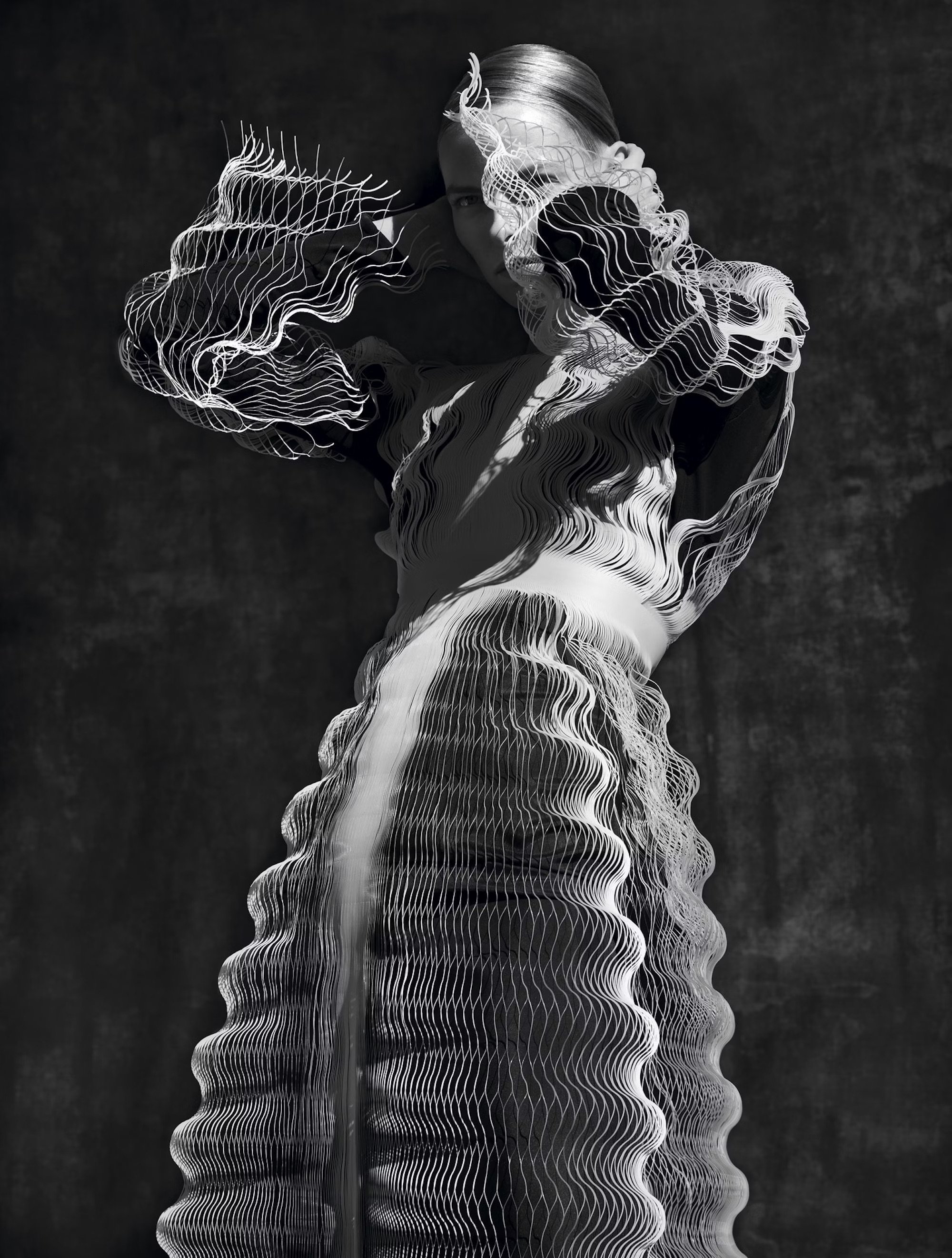Modern Creativity: A Crisis or a Crossroads?
How designers are using technology to innovate fashion.
With a rise in technological advances over the last few years in all walks of life, it’s no surprise that developments are occurring too in the world of fashion. Naturally, these changes are daunting- a new era is beginning in design.
If the Egyptians had 3D printers, would we hold the pyramids to the same degree of wonder? No. If the root of design stems from a vision derived from human knowledge and lived experience, it feels bizarre and unacceptable that this act might be replicated by a mere algorithm. When it comes to visualising an idea for a collection, a machine cannot supplant the simplistic beauty of human touch. Personally, I feel the soul of a design cannot be replaced by any act of artificial intelligence.
But there are ways in which technology can elevate designer’s visions. Perhaps we can learn from the designers utilising this side of modern creativity to embrace the technological changes that are only going to develop further, and enter with two feet into the daunting realm of what it means to be a modern creative.
When Vogue asked a selection of creatives at the 2024 New York Fashion Week, “Does AI belong in design?”, the consensus resulted in a “curious, but hesitant” mind. Are we standing too close to the edge about to plunge into a crisis of creativity, or can we take a step back from the cliffside and reassess the crossroads, take a step inland and explore the new creativity we have on offer, taking a scarcely tread but innovative direction?
One such designer who paved the way for others to move with the times and embrace modern technology, was Alexander McQueen. He challenged existing perceptions of fashion, pushing the boundaries of the art form and positioning it at the forefront of modern technological advancements. His career of innovation culminated in his final 2010 collection, ‘Plato’s Atlantis.’ Alongside being the first fashion show ever to be live streamed, the collection provided an additional breakthrough with McQueen’s process of clothing production. Taking inspiration from the mythical island beneath the sea, using his designs to imagine a futuristic interpretation of rising oceans, McQueen employed computer-generated art to digitally print on each piece of his apparel and simultaneously offered a futuristic insight into fashion.
McQueen’s courageous attitude towards the relationship between fashion and technology, embracing his role as a modern creative, provided the match to spark the turning point for the modern technological revolution to come in the fashion industry. With this being McQueen’s final show before his death, how did the small match he lit ignite a revolution?
Two forward thinking designers working today, taking forward McQueen’s belief in the power of embracing technology to elevate design, are Iris van Herpen and Stella McCartney.
An intern for McQueen, known for her experimentation with fashion, van Herpen continues McQueen’s legacy of merging technology with couture cuts. An example of this is her development of a fabric named ‘Glitch’, made from Mylar cut into computer-generated wave patterns, which when worn, emulates water ripples. Working with this idea of movement, an area of particular interest to van Herpen is emulating the contours of the female body in design. She uses electromagnetic weaving alongside hand stitching to achieve these effects, revolutionising fabrics to seamlessly emulate silhouettes of and structures within the body. She states, “My obsession with movement and transformation is the main reason I experiment with new technologies. These experiments lead to new forms of movement, and a new sensuality – a feminine sensuality that is defined with fluidity and organicness.” She is the epitome of a designer embracing modern creativity- working to fuse the dichotomy of the traditional with the modern, in turn creating a new language within fashion.
Known for prioritising material over aesthetic, designer Stella McCartney works with this language of blending to take the impact of modern technology on fashion one step further than elevation. One of the pioneers of the industry’s sustainability movement, she embraces the tools on offer as a modern creative in order to benefit the environment. Combining artificial intelligence with earth sciences, she incorporates a technology in her production that uses AI powered enzymes to convert textile waste into new and profitable material. This is a cyclical process, massively reducing the release of plastics from the textile industry, through its purpose to recycle.
With a survey carried out by McKinsey declaring that 73% of fashion executives consider generative artificial intelligence as a “top priority” for 2024, it is clear that innovation is very much in vogue. As evidenced through the work of McQueen, van Herpen and McCartney, modern technology can be utilised to extend the imaginative capabilities of the fashion industry, bringing to life ideas otherwise inconceivable. Our ways of thinking are not only changing but expanding. Through embracing the crossroads of modern creativity and choosing to delve straight in, the boundaries of artistic expression are being pushed. From production to consumption, the modern tools on offer to designers are great allies in the industry’s battle for a more sustainable, environmentally conscious and expansive art form.




